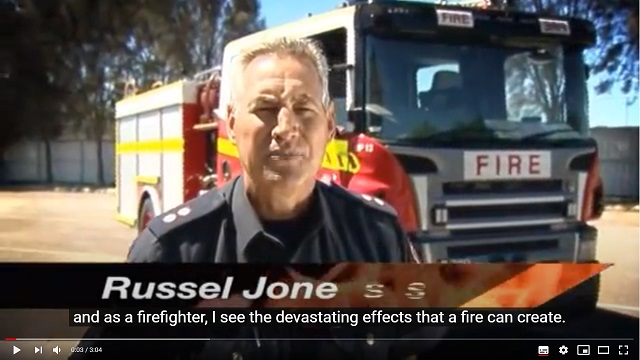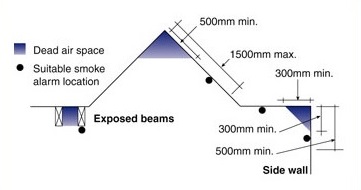Smoke Alarms: Key to Fire Safety

Each year there are around 3000 Victorian house fires. Smoke alarms are critical for early fire detection in your home. In the event of a fire, it will alert and provide you with sufficient time to escape smouldering and flaming fires. Having a smoke alarm installed in your property is a great first step towards keeping your family safe in the event of a fire.
Fire services report only 45% of properties attended by them had smoke alarms, and out of those, 31% were not working.
Where should smoke alarms be installed?
Fires can start anywhere in a home. Materials used in modern houses can fuel fires which spread fast. The Country Fire Authority (CFA) recommends fitting smoke alarms in every living area and bedroom. If you live in a house with more than one level, install a smoke alarm on each level and on stairs connecting floors. Doing so increases the opportunity to detect a fire quickly, giving your family the best chance to escape.
If you live in a rental property, the landlord is responsible for ensuring smoke alarms are fitted and work correctly. Below are places in your home where you should install smoke alarms. Make sure to fix them according to the manufacturer’s instructions.
On a ceiling
Install the smoke alarm in the centre of the ceiling. If this position is not possible, consider fixing it 300mm from any cornice or wall.
On a cathedral ceiling or sloping ceiling
Ensure the distance from the apex of a cathedral ceiling to the smoke alarm is between 500mm to 1500mm for the best results.
On a wall
You can fit a smoke alarm to a wall, however you should ensure the area is between 300mm to 500mm below the room ceiling.

Incorrectly installing a smoke alarm may result in fake warnings. You should therefore avoid positioning an alarm in the following ways:
- In the kitchen
- Near doorways of bathrooms and laundries
- Within 400mm of the blades of a ceiling fan
- Within 300mm of a light fitting
- Within 400mm of an air-conditioning vent
- Within 300mm of a corner of a ceiling or wall
The CFA recommends smoke alarms are interconnected. By doing this, all smoke alarms will sound and alert the occupants if any of the alarms are triggered.
There are three types of smoke alarms:
- mains powered or battery-operated
- Standard 9-volt battery-powered
- 10-year battery
If you’re installing mains powered smoke alarms on your property, always hire a licensed electrician.
Maintenance of Smoke Alarms
The following are some things you can do to keep your smoke alarms working and in good condition:
- Test your smoke alarms every month by pushing the test button to make sure it beeps
- Dust the smoke alarm with a vacuum cleaner brush
- Change the battery at least once a year
Smoke alarms have a lifespan of about ten years, and most of them come with expiration dates. If your alarm is older than 10 years, consider replacing it with the new one for the highest level of security.
If there is a fire, you should immediately dial 000 or a Victorian emergency hotline to receive urgent help from fire services.
